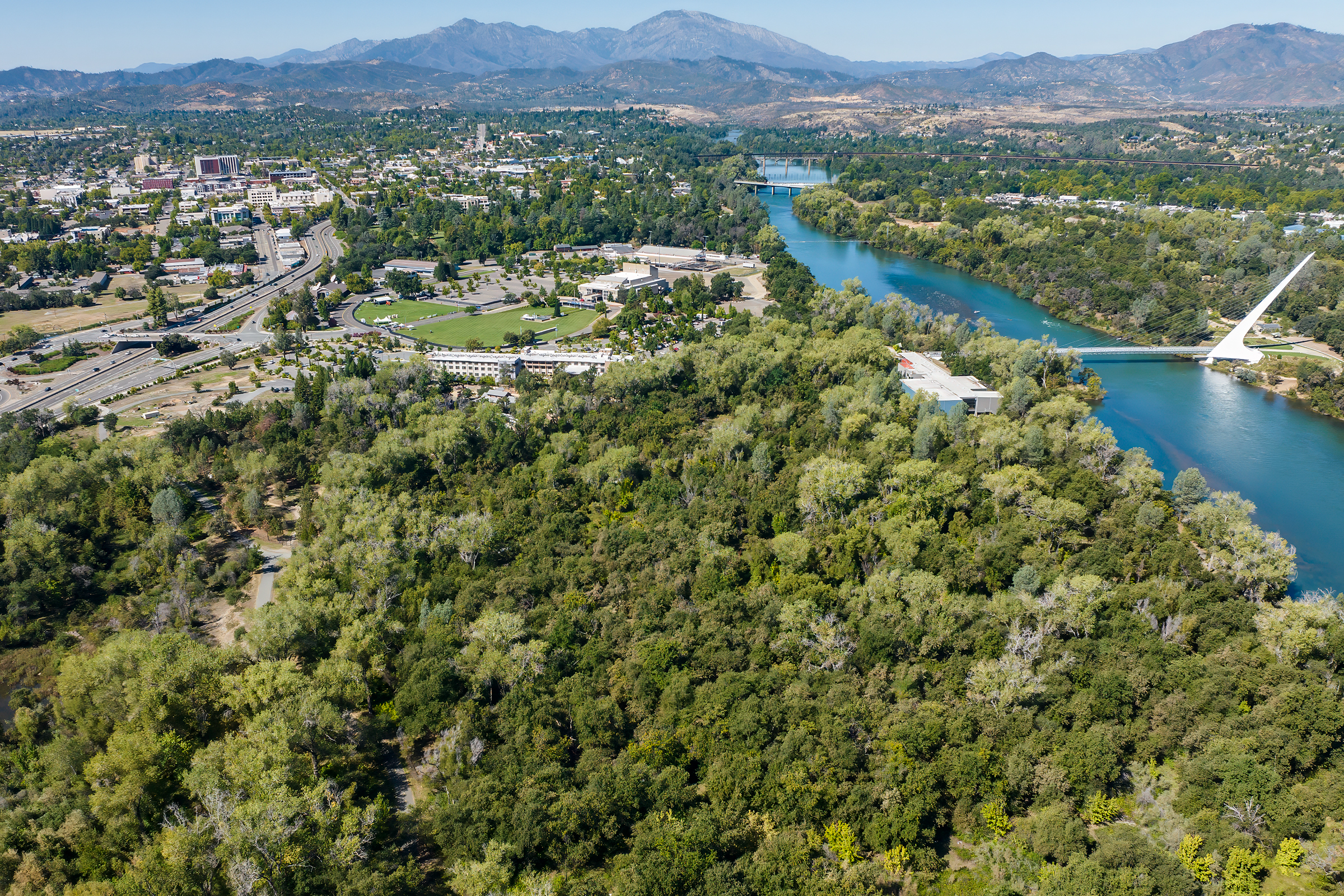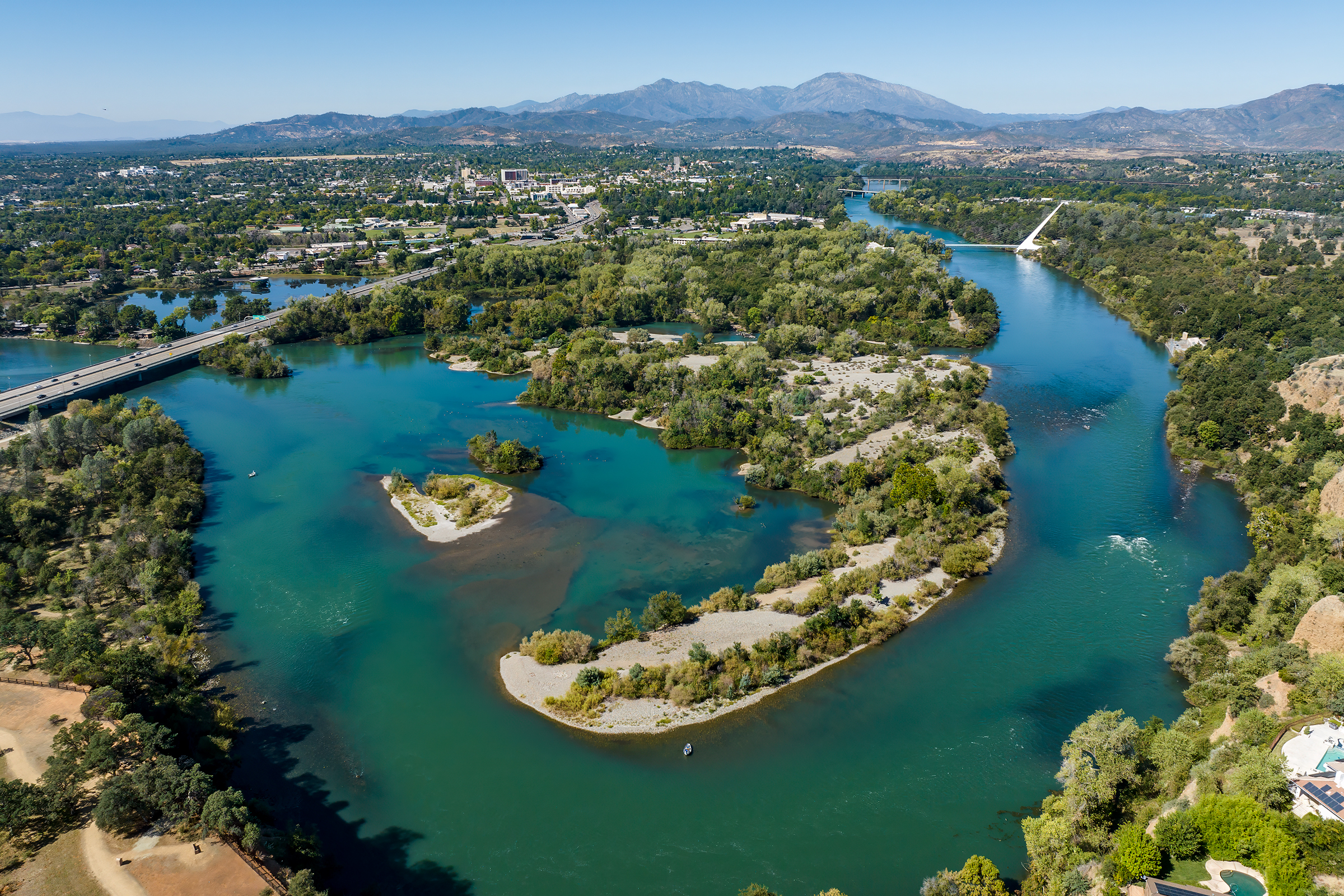I shot this view of Redding one Summer day in 2023. The extent to which Redding is shaped and defined by the gorgeous Sacramento River is clear. Musical backdrop by Craig Padilla and Skip Murphy.
Click the image below to enlarge:
The Sacramento River is a major river in Northern California, USA. It is one of the most significant rivers in the state and plays a vital role in the region’s geography, ecology, and economy:
Location and Length:
The Sacramento River flows through Northern California, originating in the Klamath Mountains in the northern part of the state.
It flows south for approximately 400 miles (640 kilometers) before emptying into the Sacramento-San Joaquin Delta and eventually the San Francisco Bay.
Watershed:
The Sacramento River watershed is extensive, covering a large portion of Northern California. It encompasses an area of approximately 27,000 square miles (70,000 square kilometers).
The river and its tributaries drain water from various mountain ranges, including the Klamath Mountains, Cascade Range, and the Sierra Nevada.
Importance:
The Sacramento River is of great ecological and economic importance. It provides freshwater to support a variety of ecosystems, including wetlands, riparian zones, and estuaries.
It’s a vital water source for agriculture in the Sacramento Valley, one of the most productive agricultural regions in California.
Wildlife and Fisheries:
The river is home to diverse wildlife, including various fish species such as salmon, steelhead trout, and sturgeon.
It is known for its historic salmon runs, which were once prolific but have been impacted by dams and water management practices.
Dams and Reservoirs:
Several dams and reservoirs have been constructed along the Sacramento River and its tributaries for flood control, water supply, and hydroelectric power generation.
Shasta Dam, located on the upper Sacramento River, is one of the largest dams in California and forms Shasta Lake, a major reservoir.
Recreation:
The Sacramento River offers numerous recreational opportunities, including boating, fishing, camping, and wildlife viewing.
Its scenic beauty and tranquil waters attract outdoor enthusiasts and tourists.
Conservation Efforts:
Conservation efforts have been undertaken to restore and protect the Sacramento River ecosystem, particularly the salmon populations. Various initiatives aim to improve fish passage, water quality, and habitat restoration.
Delta and Estuary:
The Sacramento River’s delta, where it meets the San Joaquin River, forms a vast and complex estuary known as the Sacramento-San Joaquin Delta. This delta is a critical habitat for many species and is a hub for water conveyance in California.
Historical Significance:
The Sacramento River has historical significance, particularly noted during the California Gold Rush era of the mid-1800s when it played a significant role in transporting people and goods to the goldfields. Prior to that, the banks of this verdant lifeline was populated with indigenous people. Here in Redding, those were the Wintu people.

Overall, the Sacramento River is a vital natural resource in California, serving as a source of water, supporting ecosystems, and contributing to the state’s agricultural and recreational activities. Efforts to manage and preserve the river’s health and sustainability remain a priority for the region.


